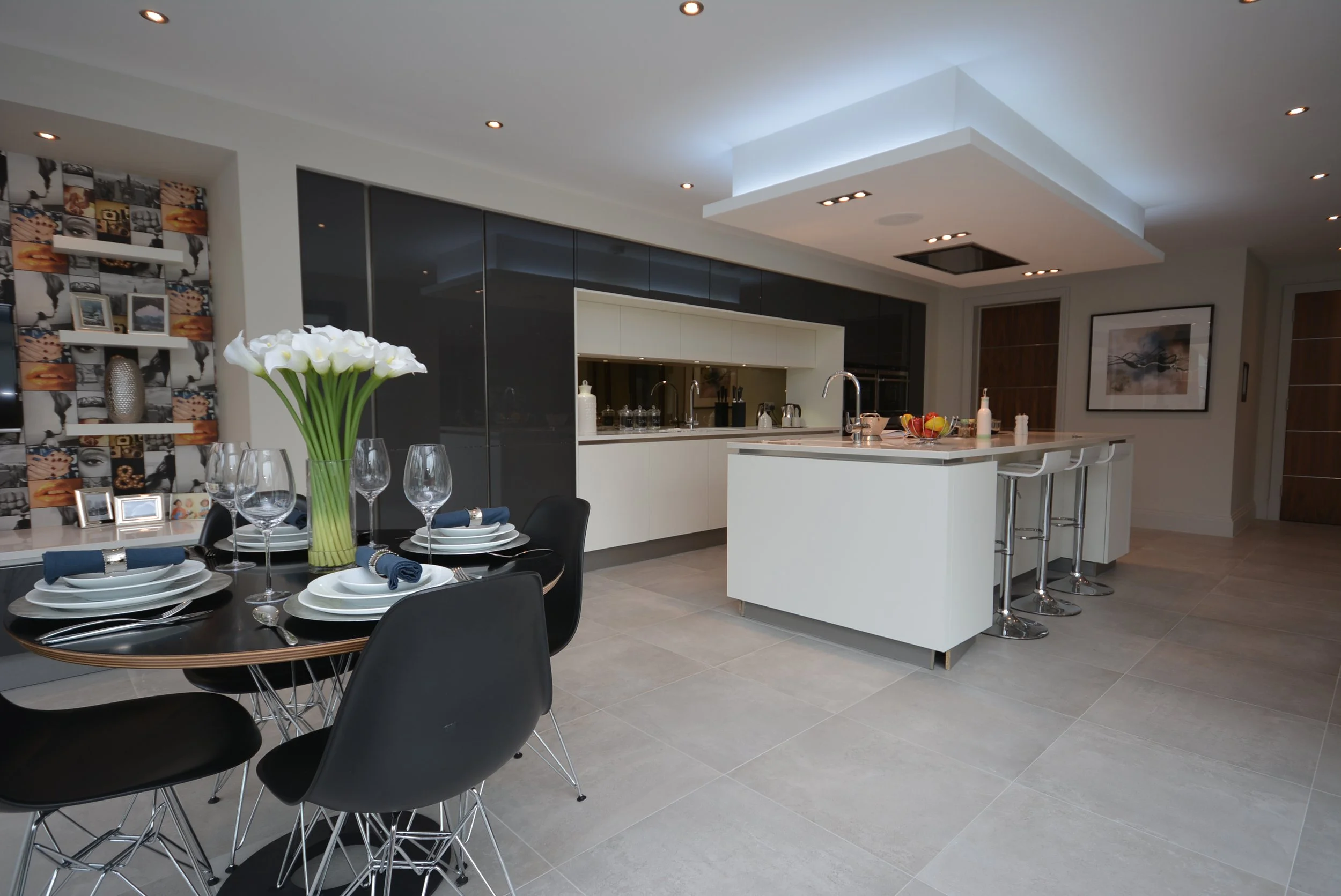9 DURABLE OPTIONS FOR KITCHEN FLOORING
Your kitchen is the beating centre of your home, bursting with activity. It’s the place where you fire up the stove to cook a world-class meal and where you gently greet the morning with a long, luxurious breakfast. As the central heart of your busy life, your kitchen deserves flooring that can cope with the daily hustle and bustle.
Whatever your budget, whatever your style, find a practical kitchen flooring that looks great and lasts for years. Kitchen floors work hard. Not only do they need to be easy to clean, but stain-resistant, stylish and comfortable to walk on. Some need to work with different surfaces or floor constructions, while others need to be compatible with underfloor heating (UFH), too. All need to last for many years, as replacing a floor is never cheap or fun.
And luckily there are plenty of options available. Such as...
Tile
Concrete
Natural stone
Hardwood floor
Laminate flooring
Vinyl
Resin
Rubber flooring
Cork
Want to know how much your project will cost?
TILE
One of the most versatile types of floor tiles, porcelain tiles can be made to look exactly like anything from concrete to wood. As porcelain is maintenance-free and highly durable, very often these tiles are more resilient than the materials they mimic.
Ceramic tiles are primarily made from clay and other natural materials. They come in many different shapes, colours and textures. Though less expensive than porcelain, they tend to be manufactured with fewer straight edges and square corners, which means that grout lines need to be thicker. This results in a more grid-like finish.
CONCRETE
If you want to add a contemporary edge to your kitchen, concrete flooring could be for you. It is more versatile than you might imagine – not only is it available in a range of colours, it can also be laid inside and out, making it ideal for open-plan extensions.
One advantage is that concrete can be poured directly onto the existing floor without any levelling and, once sealed, it is relatively low maintenance. Lightweight versions, which can be used on upper floors, are also available, but it’s best to ask a structural engineer for advice about this.
NATURAL STONE
Stone floor tiles come in such a wide range of sizes, colours and textures that they can complement any style of kitchen, from country to contemporary. Maintenance-wise, even the best quality limestone is porous, so it will inevitably suffer some wear and tear. Having said that, the latest sealants are very effective, and once applied the floor should be easy to maintain.
HARDWOOD FLOOR
When money isn’t an issue, hardwood flooring wins everytime. This household classic makes a wonderful addition to any kitchen, and has proven throughout the decades to be an irresistible classic. Unlike their laminated counterparts, hardwood floors can be easily repaired and last a lifetime. Because of this, having them installed can see a boost to your house price.
Of course, they’re not perfect. They’re an expensive option, so can eat up a lot of your budget. They can also warp in too damp areas. So you’ll need to be careful how much exposure this floor gets to water.
LAMINATE FLOORING
Supplied in planks that fit together for easy installation, laminate is a good-looking alternative to wood and stone if you’re on a budget. Make sure you choose a laminate that is suitable for kitchen use as some are not suitable in damp environments.
Laminate is available in all manner of finishes and it is super durable so it’s a strong contender for use in a high-traffic area. Prices do vary hugely, and you will get what you pay for – be aware that choosing cheap laminate may result in ill-fitting, bouncy boards.
VINYL
Vinyl flooring has come a long way from old-fashioned vinyl sheeting. Modern designs are exceptionally hard wearing and can replicate the look and feel of anything from wood and stone to zinc and glass. And it can also be warmer and quieter underfoot than the real McCoy.
RESIN FLOORING
Resin flooring can be manufactured from one of several formulations, with epoxy, polyurethane and MMA being three of the most common materials.
Epoxy based systems have traditionally been the most popular form of resin flooring and the widespread use of this material stems in large part from the variety of colours and formulations available.
RUBBER FLOORING
Silky, warm and tactile, rubber kitchen flooring is soft underfoot yet extremely resilient. Think of it this way – if it doesn’t wear out in an airport, then it won’t in your kitchen!
Choose a smooth surface or low-profile studs in a kitchen as they are easier to clean. Be careful with the products and polishes you use to maintain rubber flooring, especially initially as it’s softer when it’s new.
CORK
Not so common in the UK, cork can be a bold statement, especially when paired with modern kitchen designs. Cork also has some surprising features, such as it’s naturally bacteria-resistant and is a fantastic eco-friendly material.
Watch out though, cork isn’t as durable as hardwood or tile, and isn’t as water resistant, so we likely need replacing after 10-15 years.




















